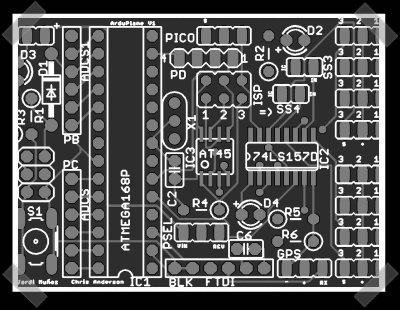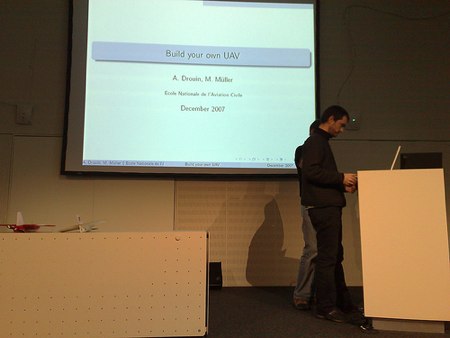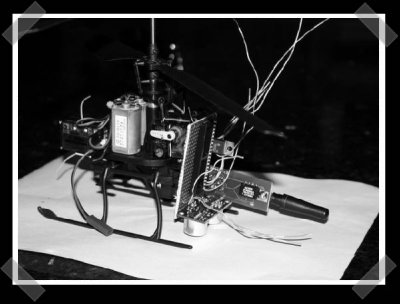
[Terence Bordelon] sent in his impressive UAV (Unmanned Arial Vehicle). The hack is a culmination of his other projects. It can be turned to fully automatic at the flip of a switch. It will fly itself to gps way points, land, and take off. The UAV has a range of 100km thanks to his home built RF Unit which runs on ham bands. The brains of the setup is his custom IMU (Inertial Measurement Unit). The unit is controlled by his ground station which either allows him to fly it normally or toggle through the various modes. [Terrence] is also a game developer and has worked on many popular titles such as Zoo Tycoon 2 and Ratchet and Clank.
















